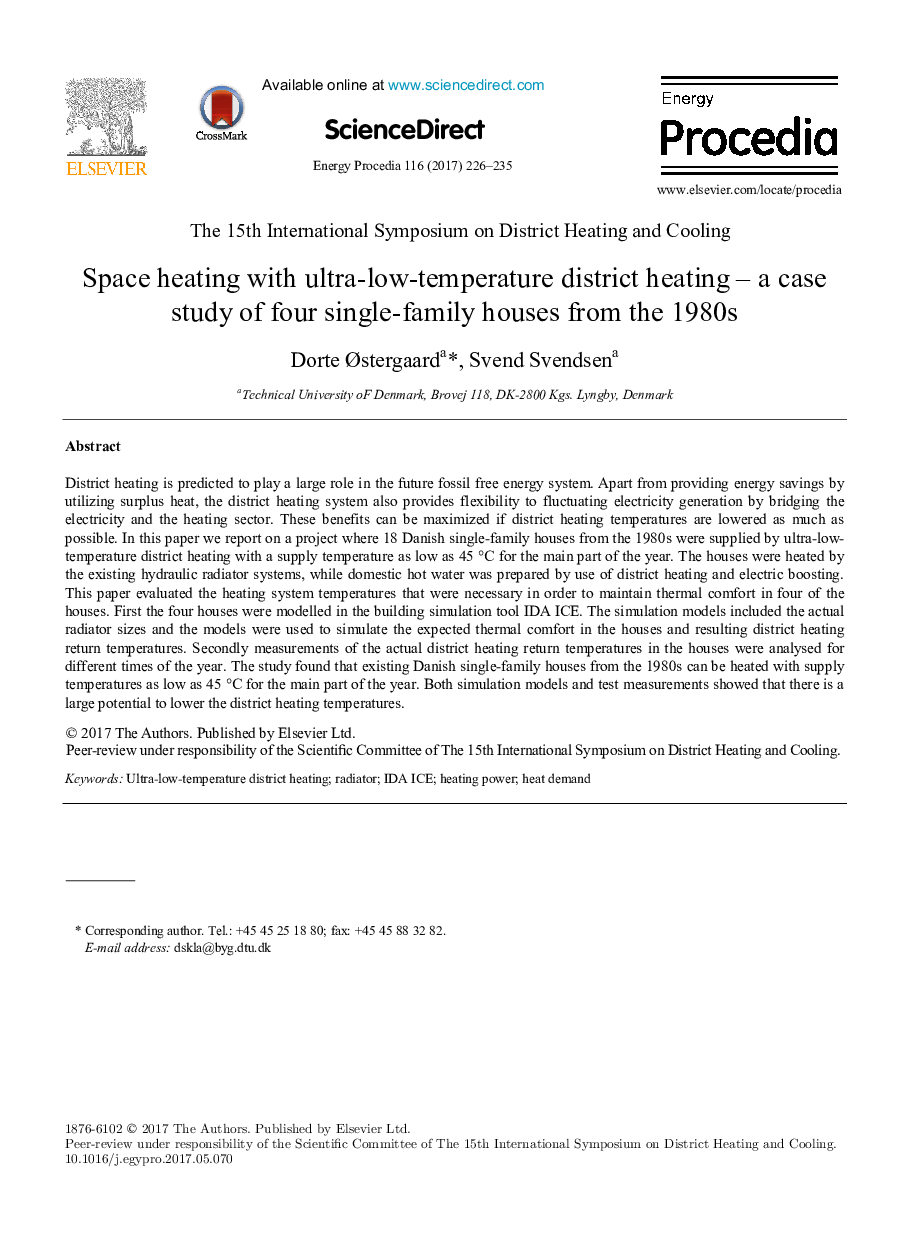| کد مقاله | کد نشریه | سال انتشار | مقاله انگلیسی | نسخه تمام متن |
|---|---|---|---|---|
| 5445290 | 1511119 | 2017 | 10 صفحه PDF | دانلود رایگان |
عنوان انگلیسی مقاله ISI
Space heating with ultra-low-temperature district heating - a case study of four single-family houses from the 1980s
ترجمه فارسی عنوان
گرمایش فضایی با حرارت منطقه ای با درجه حرارت پایین - مطالعه موردی از چهار خانه تک خانواده از دهه 1980
دانلود مقاله + سفارش ترجمه
دانلود مقاله ISI انگلیسی
رایگان برای ایرانیان
موضوعات مرتبط
مهندسی و علوم پایه
مهندسی انرژی
انرژی (عمومی)
چکیده انگلیسی
District heating is predicted to play a large role in the future fossil free energy system. Apart from providing energy savings by utilizing surplus heat, the district heating system also provides flexibility to fluctuating electricity generation by bridging the electricity and the heating sector. These benefits can be maximized if district heating temperatures are lowered as much as possible. In this paper we report on a project where 18 Danish single-family houses from the 1980s were supplied by ultra-low-temperature district heating with a supply temperature as low as 45 °C for the main part of the year. The houses were heated by the existing hydraulic radiator systems, while domestic hot water was prepared by use of district heating and electric boosting. This paper evaluated the heating system temperatures that were necessary in order to maintain thermal comfort in four of the houses. First the four houses were modelled in the building simulation tool IDA ICE. The simulation models included the actual radiator sizes and the models were used to simulate the expected thermal comfort in the houses and resulting district heating return temperatures. Secondly measurements of the actual district heating return temperatures in the houses were analysed for different times of the year. The study found that existing Danish single-family houses from the 1980s can be heated with supply temperatures as low as 45 °C for the main part of the year. Both simulation models and test measurements showed that there is a large potential to lower the district heating temperatures.
ناشر
Database: Elsevier - ScienceDirect (ساینس دایرکت)
Journal: Energy Procedia - Volume 116, June 2017, Pages 226-235
Journal: Energy Procedia - Volume 116, June 2017, Pages 226-235
نویسندگان
Dorte Ãstergaard, Svend Svendsen,
